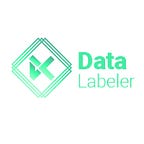Natural Language Processing | Data Labeling Services | Annotations | Data Labeler
Natural Language Processing (NLP) is a branch of AI that helps machines understand natural language and enables interaction between machines and humans using the natural language. NLP helps the machines to read, understand and manipulating human language in a valuable way.
How NLP Works?
The first step in NLP depends on the type of application being developed. A voice-based system for instance involves the use of Hidden Markov Models (HMM)for converting words into text. HMM utilizes math models for interpreting natural language and converting it into text. The NLP system then processes this text further.
The next step involves understanding the context and language by dividing each part of a sentence into parts of speech. The algorithm that performs this step is trained on grammar rules. These algorithms use statistical Machine Learning to help NLP system to interpret the word context.
In scenarios like above where speech-to-text is involved, the NLP system avoids the first step using HMM and interprets the words based on grammar rules using algorithms.
NLP uses two methods mainly to interpret the human language; Semantic and Syntax analysis.
Syntax involves arrangement of words using grammar rules. This method enables the NLP system to use grammar rules and extract meaning from language.
Syntax Techniques
- Parsing — checking sentences for grammar
- Sentence breaking — placing boundaries around large texts
- Word segmentation — divide larger texts into smaller fragments
- Morphological segmentation — grouping of words
- Stemming — Use inflection to convert words to its root forms
Extracting meaning from the text forms the crux of Semantic Analysis. The NLP system utilizes semantic analysis to understand the meaning and review the structure of a sentence for logically interpreting the human language.
Semantic Techniques
- Sense disambiguation — using context to derive word meaning
- Named Entity Recognition — divides words into groups as per the category
- Natural Language Generation — extracts hidden semantics within words using a database
Technical Approaches for Developing NLP Systems
To develop an NLP system, two main technical approaches are used. They are Machine Learning and Rules-based methods
ML-based method uses algorithms that has the ability to interpret natural language based on previous encounters. In this method, text annotation services are used to train the ML algorithms on how to co-relate an input with its respective output. When you consider the previous example of Sentiment Analysis, an algorithm is specifically created for the automatic classification of reviews into positive, negative or neutral. The algorithms undergo training to accomplish the task by leveraging human labeled text data and to predict for unseen data without manual intervention.
Rules-based method applies linguistic rules to text. Each rule has a prediction and an antecedent. When performing sentiment analysis on product reviews for instance, it lists out the positive and negative words. Each review is analyzed to get the count of positive and negative words that in-turn helps to determine the sentiment of the overall text.
NLP Use Cases
Email Assistants
NLP has been used for everyday activities in some form or the other like auto-complete, grammar, spell-check and auto-correct. Email filters also use NLP to keep the spam emails away from the inbox.
Chatbots
NLP is utilized for training chatbots on specific behaviour and to enhance their performance before deployment. NLP algorithms enable chatbots to answer customer queries. They help the chatbots to interpret the meaning behind a query raised by customer and answer without human intervention in real-time.
Sentiment Analysis
Sentiment analysis is a common application of NLP that helps to determine the positive or negative polarity of a text. It empowers businesses to get customer views on their services or products. It is mainly used for categorizing product or company reviews and collect customers’ opinions from their social media posts or comments.
NLP requires the help of ML/DL algorithms to perform this task and also to perform back-end computation and data analytics for understanding huge data volumes.
About Data Labeler
Data Labeler specializes in providing best-in-class labeled datasets that help to power Machine Learning algorithms for Computer Vision projects. Contact us to get high-quality labeled datasets for AI applications.
A Simple Guide to Natural Language Processing
Originally published at https://datalabeler.com on December 29, 2020.
